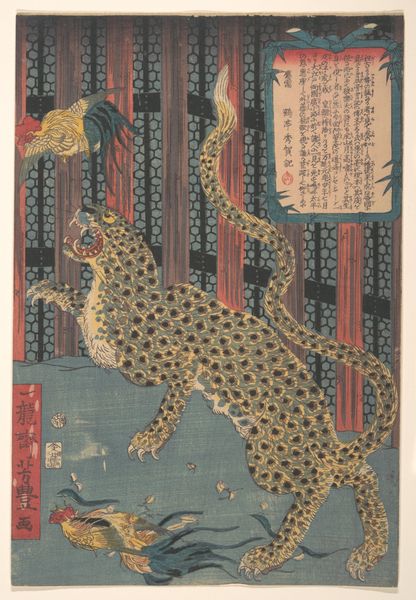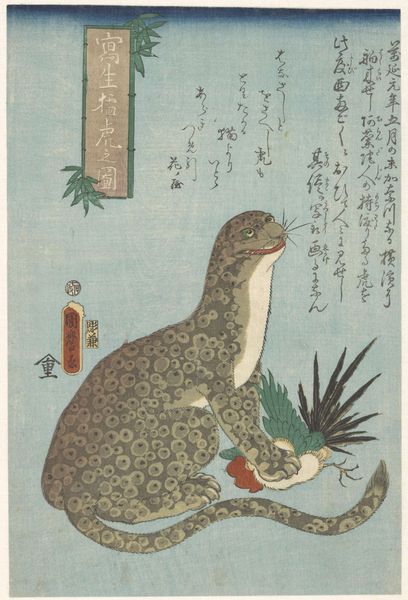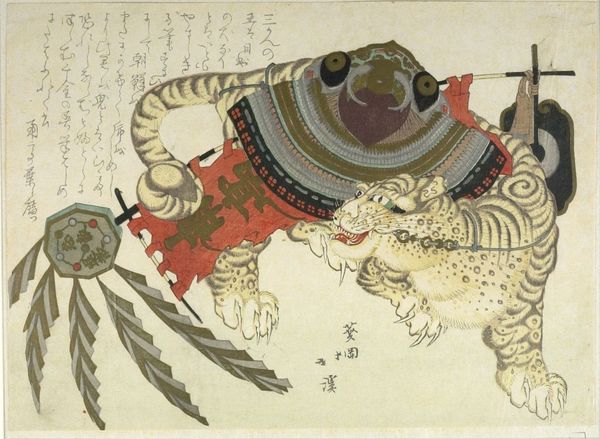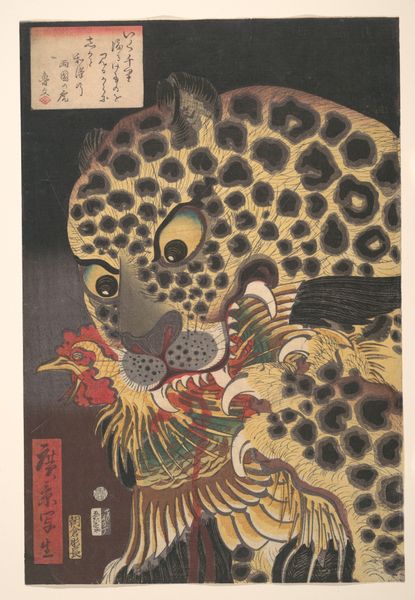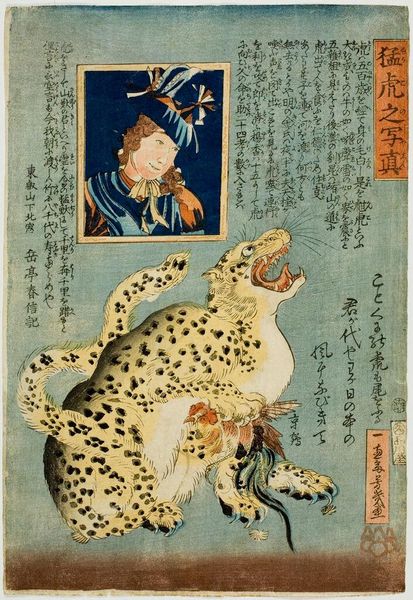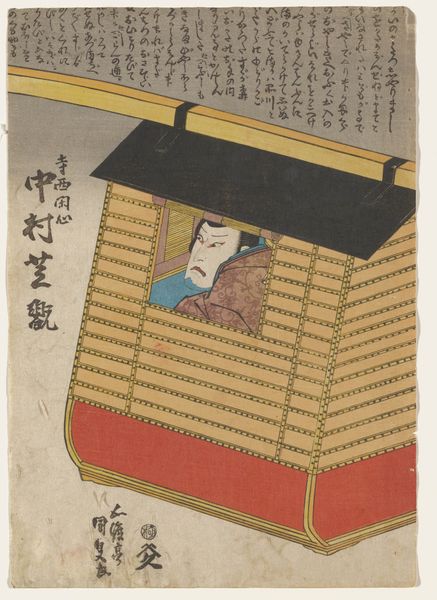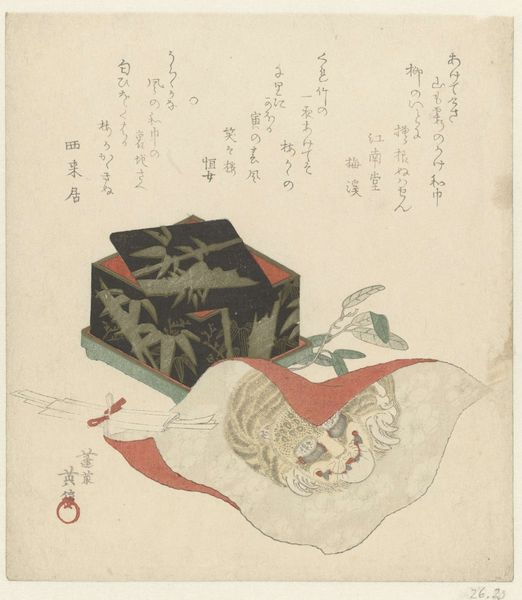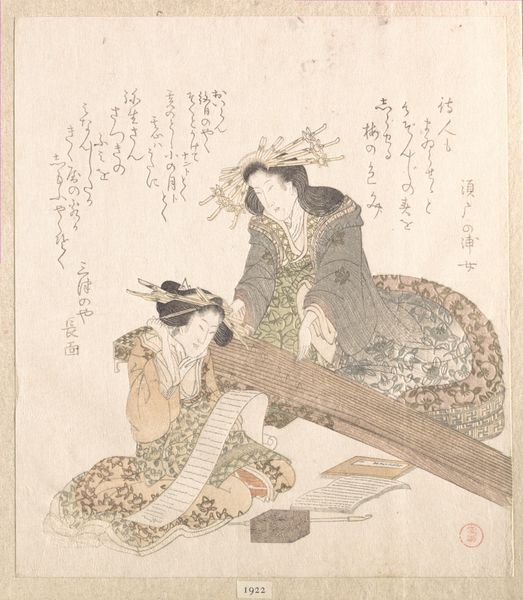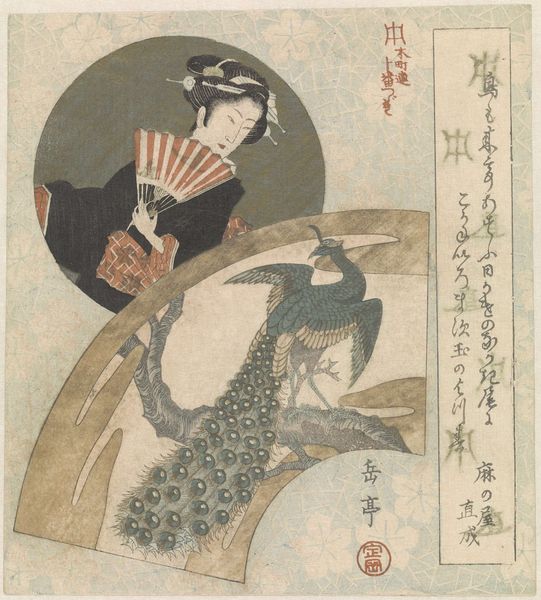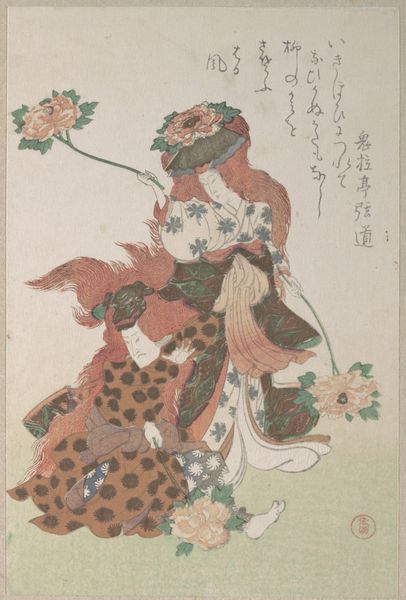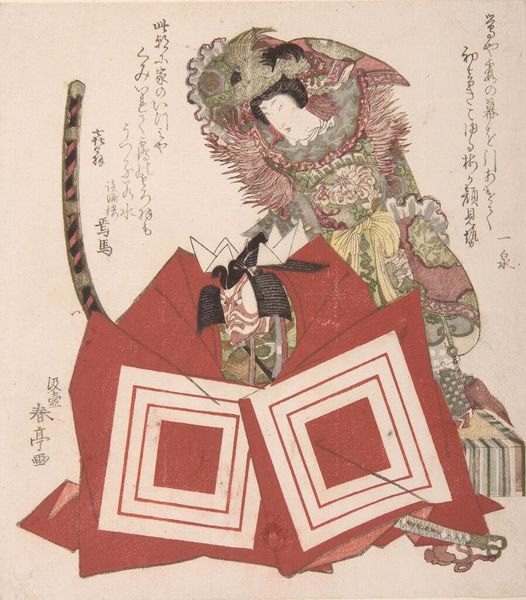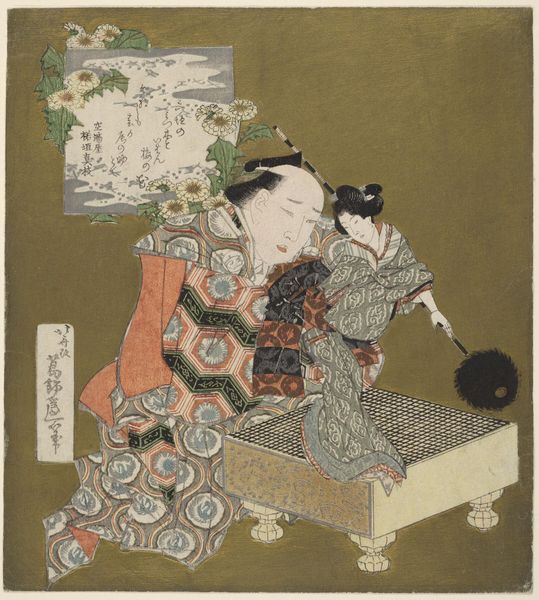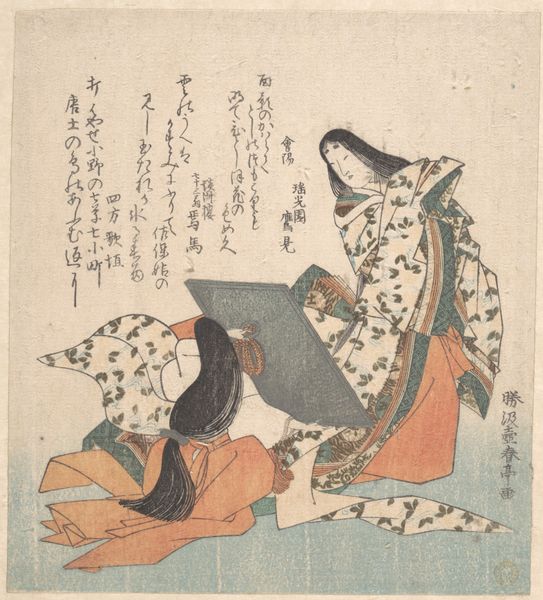
Never Seen Before: True Picture of a Live Wild Tiger (Konjaku miken, Ikimono mōko no shinzu) 1860
0:00
0:00
print, woodblock-print
#
narrative-art
# print
#
asian-art
#
landscape
#
ukiyo-e
#
japan
#
figuration
#
woodblock-print
Dimensions: Image: 14 3/8 x 9 7/8 in. (36.5 x 25.1 cm)
Copyright: Public Domain
Curator: Here we have a woodblock print, a rather witty piece titled “Never Seen Before: True Picture of a Live Wild Tiger” created by Kawanabe Kyōsai around 1860. It’s part of the Ukiyo-e tradition and currently resides at the Metropolitan Museum of Art. Editor: Wow, it's… unsettling. I get this distinct sense of theatrical menace from it. The animal's posture is awkward but the expression is pure drama. The scale feels off, like a strange diorama of predator and… breakfast? Curator: You’re picking up on the playfulness! The title itself is a huge wink—more "stage tiger" than the real deal. Notice the rooster perched up there, completely unfazed, and another as tiger’s dinner? The inscription humorously suggests the artist's "realistic" observation is purely from imagination. Editor: Right, there's this layered commentary happening, almost a meta-narrative poking fun at both scientific accuracy and the exoticized image of the tiger in Edo-era Japan. The way Kyosai uses line—sharp, yet slightly cartoonish—adds to that feeling. Curator: Indeed. It subverts our expectations. The landscape elements, almost minimalist, enhance the stage-like setting. You almost expect the tiger to break out into a kabuki dance! Also the Western ink and pigments combined with traditional woodblock printing brings another layer to its story. Editor: So it's both an observation of and a commentary on representation itself? A real head-scratcher cloaked in this bold, graphic style. And despite the comical aspect, I do sense that it’s capturing some genuine fascination with the unknown, and a bit of underlying anxiety towards what might lie beyond the known world. Curator: Exactly. It holds up a mirror, not to nature, but to our perceptions. This print showcases that sometimes, it is not what is depicted, but why and how it is depicted that speaks volumes. Editor: So, perhaps the tiger isn’t really a tiger at all, but a reflection of our fears and fantasies, filtered through the lens of humor and artifice. Curator: Precisely. It's an early example of conceptual meme. Kyōsai's tiger ends up being both predator and performance artist.
Comments
No comments
Be the first to comment and join the conversation on the ultimate creative platform.
